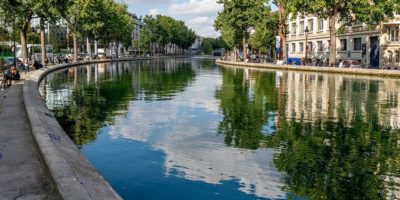A Crash Course on the London Rave Scene
We’re going to stay up all night in England’s capital city
London is no stranger to parties. Walking down the street late at night, you’ll find speakeasies, secret bars, fetish clubs, traditional pubs, and everything in between. For some, the more ‘typical’ night of pub and club just isn’t enough to satisfy their party craving. Some night-crawlers may want to frequent some of the city’s most infamous techno clubs – or even more intense, check out the rave scene.
London’s rave scene is the stuff of legend, with raves becoming held in underground spaces, and some being illegal and sought after by the police. Now a days, there is a mixture of different offerings for the rave-goers; there are some ‘free parties’ held at spots around the city, there are some underground illegal parties, and then there are some techno clubs which can easily be considered raves in today’s society.
We’ll take you through the history of this scene and how it came to be, how it is thriving in London today, and how you can discover these infamous parties.
The History of Raves in London
Back in the 1990’s, raves were only discussed by word of mouth, trying to be concealed from the authorities and the general public. Locations of raves were passed through messages on telephone boxes. Why the espionage-like messages do you ask? There was a governmental act passed in 1994 which banned repetitive beats in open spaces – aka, raves.
Cue the birth of free parties, a 1990’s creation which is still happening today. For example, in May of 2018, hundreds of ravers all converged upon the Aylward School in Tottenham for an evening of beats and dancing.
The people who come to these events have to venture through unsafe and difficult territory to get to their secret locations, showing the dedication of the ravers and how much they’re willing to do in order just to listen to some repetitive beats.
Governmental unrest fuels the ravers then and now

Hakkasan Night Club – By David Jones [CC BY 2.0 (https://creativecommons.org/licenses/by/2.0)]
They enjoy playing these free music scenes, in order to make a statement against the patriarchy and elitism that is involved in the industry, and to play for true die-hard fans who will go to great lengths to see an underground set.
The hidden-tradition of underground raves continues to be an important part of the music scene today due to the ongoing political unrest in the country. The governmental politics are just as bad in current times as they were in the 80’s and 90’s. The disregard of the less fortunate people and the working class fuels the disruption of traditional norms and the passion to challenge the elitists.
In London, the raves are usually organized by a special organization called collectives. The people have regular 9-5 jobs, but they still prioritize rave music above more typical hobbies. The organizers keep the events on the down low, and usually limit communication to the night-of.
Late that night, around 10 pm or so, you might receive a text or Facebook message about the location – or just a picture of a map. And the rest is up to you. Let the adventure begin.
Diversity is what keeps the crowds coming
The crowd you’ll find at these semi-secret venues is always interesting. There is usually a wide range of people, from all walks of life, that all converge to one spot. College kids, working professionals, and refugees all find solace in these events, meeting like-minded people even if they’re from completely different backgrounds and circumstances. This is a great feat for a city that is still somewhat segregated by class, with the London lawyers and professionals in different parts of towns and social circles than the East London construction workers and students.
Precautionary measures taken to keep the raves safe – somewhat
Part of the reason some of these people like these open-to-all experiences is the normalization and socialization of drug use. You can openly do whatever drug of your choice in the room with everyone around you; you won’t see people sneaking off to the bathroom in groups of two.
The point isn’t to promote drug use or to advocate it – but when you engage in this activity in a social setting, you have people looking out for you. Those who come to these events aren’t paranoid about getting caught, and they have dozens or hundreds of similar people around them who will help out if you get in a bad spot.
The aspects which make techno clubs popular are still present in the underground raves. You’ll usually have to pay an entrance fee, and sometimes it’s guarded by security and staff to keep the people safe. The sound systems are top notch, and bar staff is sometimes present as well, keeping a somewhat professional aura.
Even though you may have to pay an entrance fee or bar at some, for other events you just bring your own alcohol, and the DJ’s perform for free, continuing the term ‘free parties’ literally. The ‘anything goes’ attitude makes these secret events ironically open to everyone – which makes it so tempting and freeing to attend.
Variety of music styles continues to draw a diverse crowd
The one common thing all of these individuals have in common is the love of the music. The style of music playing at a certain event will slightly determine the crowd it attracts. Drum n’ bass events usually bring in a younger crowd, while house and techno events bring in a mix of young and middle-aged.
Regardless of the age, the crowds that show up are usually only separated from one another by a slight degree of separation – friends of friends crowd into a small space, so you’re never too far from someone who genuinely cares about your well being. This leads to a safe environment in which to engage in otherwise unsafe behavior.
Legal locations to engage in raving…
1. Corsica Studios

The Cesarians – By GanMed64 [CC BY 2.0 (https://creativecommons.org/licenses/by/2.0)]
First up, we have Corsica Studios near the always-busy Elephant and Castle station. The main area and the smaller second space is filled with sound coming from Funktion One sound systems, blasting the beat-heavy music with ease. The Sunday morning session, Jaded, is an all-time favorite among real ravers in south London.
This event lasts from 5am until 3pm and is designed for those who just can’t bear to go home after a Saturday night clubbing. Open until 6am on weekends due to the great soundproofing, this is a great spot for 500 or less people to dance the night away.
2. Fabric: London’s most famous club

Ariel Fabric – By Detech 02 at English Wikipedia [Public domain]
3. Fold: a newcomer on the scene
Third on our list, we bring you Fold – a newcomer in the clubbing scene, but an important one nonetheless. This nightclub has a 24-hour license – you can see where this is going I imagine. This spot boasts full 24-hour long events, and lets you buy tickets to enter at different times in order to space out the crowds and let you come at your leisure. Despite temporarily having its license suspended, this club is back and better than ever, giving you East Londoners a place to party all day and night.
4. Dalston Roof Park: a hidden rooftop party

Wikimania 2011 dungodung – By Dungodung [CC BY-SA 3.0 (https://creativecommons.org/licenses/by-sa/3.0)]
Music events and parties usually carry on from early afternoon until midnight, and the near-hidden location gives it somewhat of an underground-rave-vibe, enhancing the novelty of the space. And also – who doesn’t want to dance on a rooftop to electronic music?
The history of raves have contributed to the die-hard fans you see today

Cxema x Boiler Party – By Yana Franz [CC BY-SA 4.0 (https://creativecommons.org/licenses/by-sa/4.0)]
The die-hard ravers, who risk their safety and their comfort to find and venture to the hidden venues, comprise an overarching group who believes in dismantling the elitism in the music industry and in the government. Despite these underground raves being illegal, the message it stands for could be something almost everyone gets behind.
They want a lack of segregation in society, with political persona, lawyers, laborers, and students all coming together in one venue to share in a common interest. The effort of trying to integrate society into one venue should strike a chord with everyone in London – wouldn’t everyone get along better if we could put aside classes and statuses, and admit the liking towards the same things?
Even if these secret events aren’t what you’re looking for on a Saturday night or Sunday afternoon, the numerous music venues spread throughout London which play house music in massive warehouse halls or underground smoky rooms are perfect for techno-lovers. The relaxed atmosphere, loud music, stellar sound systems, and good vibes all create the rave scenes that people know and love today.
Planning a trip to Paris ? Get ready !
These are Amazon’s best-selling travel products that you may need for coming to Paris.
Bookstore
- The best travel book : Rick Steves – Paris 2023 – Learn more here
- Fodor’s Paris 2024 – Learn more here
Travel Gear
- Venture Pal Lightweight Backpack – Learn more here
- Samsonite Winfield 2 28″ Luggage – Learn more here
- Swig Savvy’s Stainless Steel Insulated Water Bottle – Learn more here
Check Amazon’s best-seller list for the most popular travel accessories. We sometimes read this list just to find out what new travel products people are buying.
















